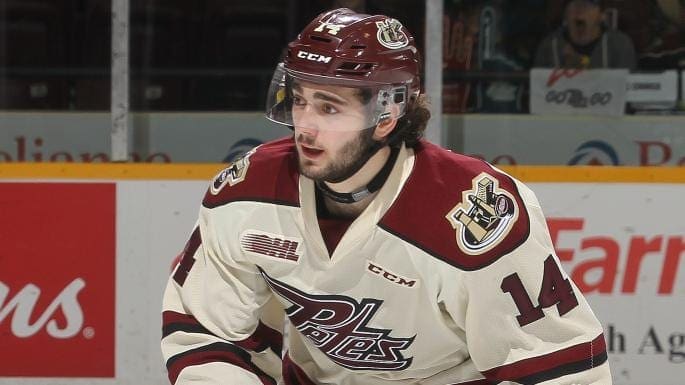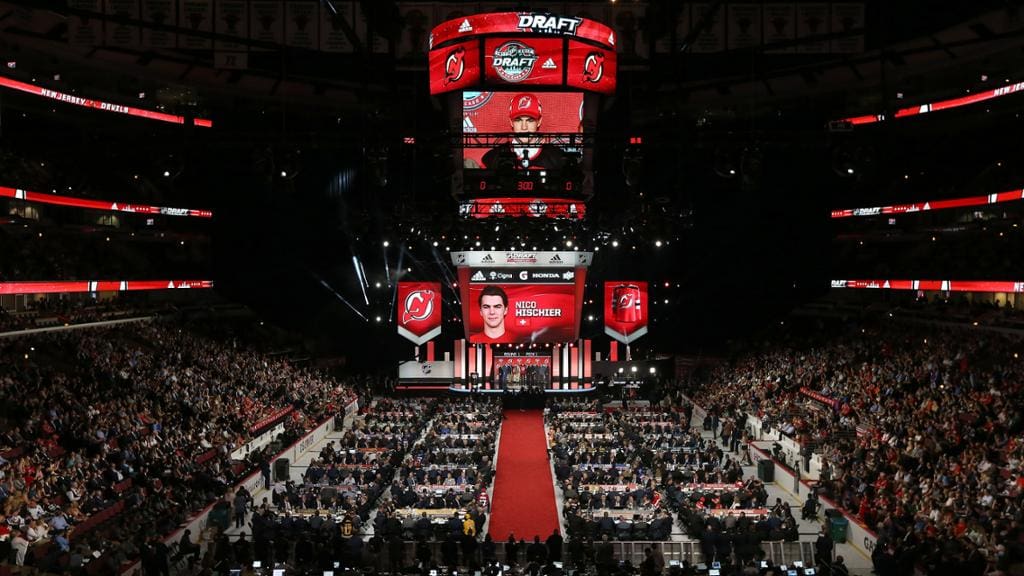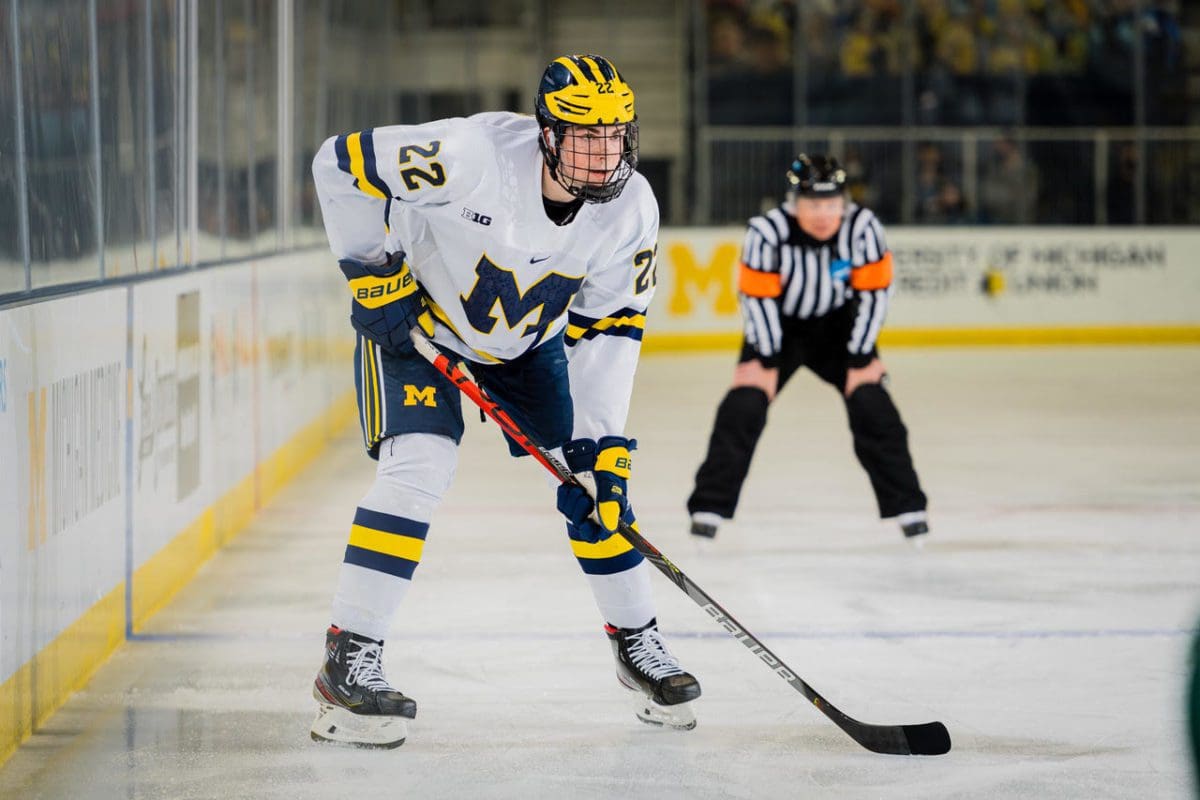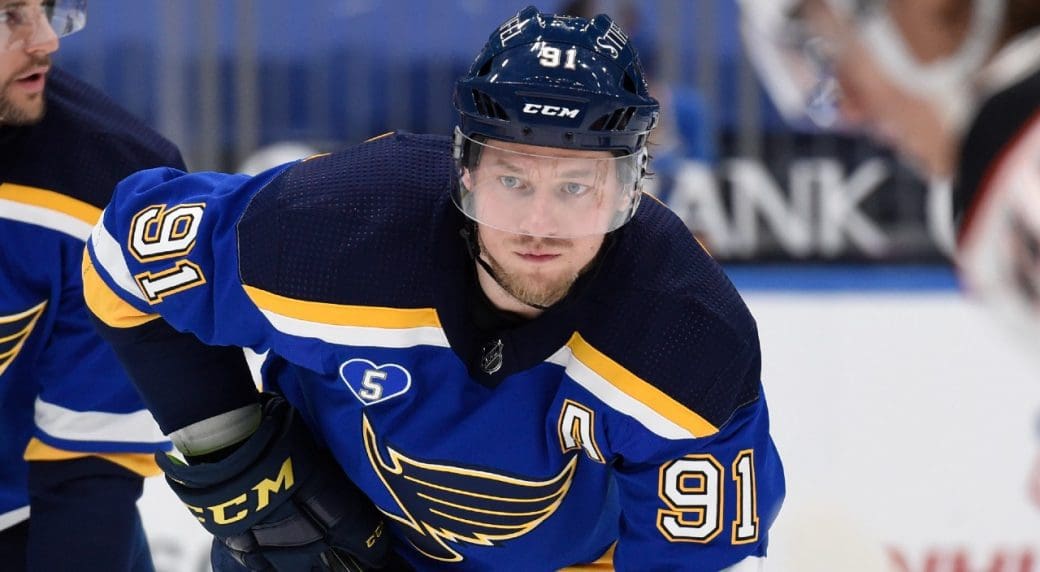by Rebecca Wood
To start this article, it’s important to point a couple of things out. Firstly, it’s not a guide to everything you could possibly want to know about the NHL draft.
What it is is a brief look at the draft system and who the top prospects will be ahead of the draft event, which takes place on 23rd and 24th July 2021.
The system dates back to the early 1960s when it was known as the NHL Amateur Draft, to be eligible players had to be aged between 18 and 20 as well as playing no-professional hockey.
In 1980 the title was updated to the NHL Entry Draft, this allowed professional players aged 18-20 to also join from the defunct World Hockey Association.
NB, the only exception being the now infamous #99 Wayne Gretzsky, who was undrafted but came to the NHL as part of an agreement for WHA teams to bring over a limited number of players.
So why is there a draft system?
Like with all American sports the draft system is designed to favour the weakest teams who performed poorly in the previous season with the overall.
WATCH: TSN did their Mock Draft earlier this week
https://youtu.be/hTZYS_BFRpM
The idea being that combined with the salary cap no one team is able to end up with too much of an advantage and the league is always kept fresh and competitive.
As such how the order is determined depends on a number of factors but follows the structure below:
1. The teams that failed to qualify for the playoffs.
2. The teams that made the playoffs but did not finish top of their division or make the Conference Finals.
3. The teams that finished top of their divisions but did not make the Conference Finals.
4. The teams that lose in the Conference Finals.
5. The team that lost in the Stanley Cup Finals.
6. The team that won the Stanley Cup.
The exact order is determined by the clubs points tally from the previous regular season, the team with the lowest points in each of the groupings will pick first, then second last will pick second and so on.
The top three draft selection order is further determined by “the draft lottery.”
From 1963 till 1994 the draft worked in reverse order to the team standings, so the team that finished last in the previous season would pick first.
In 1995, there was a change that allowed any team that didn’t make the playoffs would be entered into a lottery, allowing the winner to move up by as many as four picks.
In 2016 the draft lottery was again updated so first, second and third picks are all determined by lottery.
It’s sounds complicated, doesn’t it? Don’t worry it really isn’t.
The teams who don’t make the playoffs are entered into the draft lottery. The odds are then stacked towards the teams who performed the worst in the previous regular season. Again all with the idea being better competition overall but a further element of excitement.
For example, 15 teams don’t make the playoffs; the team who finishes last overall in the regular season has around 18.5% chance of winning the lottery.
Whilst the team finishing highest in the regular season but missing out on playoff action will have about a 1% chance.
No one team can ever drop more than three places as it is only first, second and third pick allocated by the lottery. The rest of the selections are made using the reverse order from the previous season’s results as mentioned above.
This year the league made changes to the lottery after last year’s favourite — the Detroit Red Wings — slipped to fourth. The lottery will assign the first two picks and then the remaining picks will be in reverse order of regular season points.
One last thing – don’t forget teams can trade picks as part of trade deals, you will notice this highlighted in the order below.
This year’s order
Seattle Kraken have entered the mix this year as the newest expansion team while Arizona Coyotes have forfeited their pick for violating NHL Combine Testing policy during 2019-20 season.
1. Buffalo Sabres
2. Seattle Kraken
3. Anaheim Ducks
4. New Jersey Devils
5. Columbus Blue Jackets
6. Detroit Red Wings
7. San Jose Sharks
8. Los Angeles Kings
9. Vancouver Canucks
10. Ottawa Senators
11. Chicago Blackhawks
12. Calgary Flames
13. Philadelphia Flyers
14. Dallas Stars
15. New York Rangers
16. St. Louis Blues
17. Winnipeg Jets
18. Nashville Predators
19. Edmonton Oilers
20. Boston Bruins
21. Minnesota Wild
22. Detroit Red Wings (from Washington Capitals)
23. Florida Panthers
24. Columbus Blue Jackets (from Toronto Maple Leafs)
25. Minnesota Wild (from Pittsburgh Penguins)
26. Carolina Hurricanes
27. Colorado Avalanche
28. New Jersey Devils (from New York Islanders)
29. Vegas Golden Knights
30. Montreal Canadiens
31. Columbus Blue Jackets (from Tampa Bay Lightning)

Liam Kirk was drafted to Arizona in 2018 and went to Peterborough Petes for experience (PHOTO: Peterborough Petes)
Eligibility
During the draft assembly players are selected from junior or collegiate leagues, as well as professional European league players who meet the draft requirements two to three months after the previous season concludes.
You may remember recently GB forward Liam Kirk was selected in the seventh round 189th overall by the Arizona Coyotes in 2018.
For European and international players to be eligible they must be aged between 18 and 21 years of age. Players from North America make up a large proportion of the NHL entry draft and completion is high, rules are a little more particular.
Players aged 18 on or before September 15 of the draft year, and below the age of 20 before December 31st are eligible.
A few of the previous surprises have seen Nicklas Lidstrom, Brett Hull and Pavel Datsyuk, who went on to enjoy long and successful NHL careers.
So why does a good pick matter so much?
A good draft pick can mean so much more than just the potential of a skilled player, they can shape your team and be crucial in the years to come.
Different teams will be looking for different players, some may want a forward, others a defenceman, occasionally you will see a goalie go top but this is less likely.
Teams will consider, do they need a player who is ready now or will they need to further develop them, thinking OHL, AHL etc.
Also what is their current roster like? Are trade deals on the horizon? Will this player go on to form part of that? Will they need to trade picks in the future so this one matters? Is there likely to be a player that fits with them in the spot they need to pick them?
If you look online, especially on social media you will find all sorts of accounts simulating out possible scenarios and fans thrashing out the merits of different possible selections.
So, on to the top prospects this year.
Being picked first or considerably lower in the draft isn’t always the be all and end all in a young hockey career, but it can make a big difference.
Fluery, Ovechkin, Crosby, Matthews, Hall, Kane, Stamkos, Tavares, McDavid, to name a few, have all been drafted first overall and made a huge impact on the league and for the clubs who originally snapped them up.
You will also now probably realise the team picking highly factors into how attractive a player is, the list below is designed to highlight who could be some of the key players from this year’s draft and future NHL stars, in no particular order .
Owen Power, D, University of Michigan (NCAA)
Fresh from playing with Canada at the IIHF Men’s World Championships, Power is a very intelligent and well-rounded defenceman.
His strengths lie in his understanding of the game and his transitional ability, his size also goes in his favour. He will likely need a little time for a few further improvements before he is really ready for NHL hockey though.
“A tower of ‘power’ from the backend that brings a blend of size, skill, and mobility to the ice on every shift. Effective at both ends of the rink [he] often separates attackers from the puck using his long reach combined with strong four-way mobility.” — Video scout Brandon Holmes
William Eklund, C, Djurgardens (SHL)
Eklund has been playing in the SHL and is probably one of the most NHL-ready players in this draft and as such likely to be a key selection this year. He has proven himself to be attuned to finding dangerous ice and is also comfortable working both ends of the ice.
“One of the most interesting prospects this year. He has so many different layers on the ice and can fit into multiple roles. Eklund can be the hard-working type or be a creative player and score goals and be a focal point offensively for his team.” — Regional scout Fredrik Haak
Luke Hughes, D, USNTDP (USHL)
You will likely recognise the name, Luke is the younger brother of Vancouver Canucks defenseman Quinn Hughes and New Jersey Devils forward Jack Hughes.
He comes from a strong hockey family which makes him one to watch, however Luke is a patient and poised, smooth skater in his own right.
He has great vision but he is one of the youngest players in the draft and still has work to do on his defensive engagement, he will need time before he is NHL ready but has tremendous potential.
“One of the best skaters in the entire draft class, Hughes has enormous potential as a high-end play-driving defenseman. Needs to improve his effectiveness on special teams.” — Head video scout Derek Neumeier.
Brandt Clarke, D, Barrie Colts (OHL)
Clarke is regarded by many key scouts as one of the hottest defensive prospects in this year’s draft.
He can handle a puck with creativity and is highly confident; probably stemming from his strong skating skills that assist his puck handling and transitional play. However Brandt is likely to need some time before being ready to make a substantial impact in the NHL.
“A shifty, creative and intelligent rover-style defender. He drives chances through his incredible transition skills, taking the blue line with speed and driving the puck deep into the offensive zone. Needs to improve his gap control and defensive positioning.” — Head Eastern scout Dylan Galloway
Jesper Wallstedt, G, Lulea (SHL)
Wallstedt played 22 games in the SHL this previous season and has his head screwed on. His positional awareness is incredible, and he exhibits a balance of calm and collected but able to ramp it up when needed.
He could possibly use some work on his athleticism and reflexes to be upto NHL speed but he is sure to be a top netie in the coming years. Wallstedt is sure to attract attention and could be the first top-10 goalie draft since Carey Price was picked fifth in 2005.
“He’s a goalie with all the tools in his box. Great body size, well-positioned in the crease, excellent puck tracking, and overall good technique. Besides that, he is so calm and confident. A top goalie in a few years.” — Haak
Chaz Lucius, C, USNTDP (USHL)
Lucius is still somewhat of a wildcard having missed the initial part of the season with a knee injury that may still ring alarm bells for some prospective teams.
He is also weaker defensively, however he more than makes up for this with his offensive ability. His playmaking is constantly improving and he is easily one of the best all out goalscorers in the draft. With the right support he looks set to post big points in the coming years.
“A knee injury derailed the first half of his season and affected his skating at first, but his elite shot, puck skills, and offensive instincts allowed him to step in without missing a beat and scored at a goal-per-game rate the rest of the way.” — Regional scout Joseph Aleong
Mason McTavish, C, Peterborough Peters (OHL)
McTavish had a good showing at the Under-18 world championships, despite his age he shows himself to be a mature well-rounded player with good skating and a decent shot.
He also comes with size and strength on his side, he is six foot two and 207 lbs – he could slot in to playing almost immediately in the NHL.
“Solid and competitive, yet a highly-skilled power forward. He owns an accurate and powerful shot, and is capable of creating space for himself in the dangerous areas to be able to use it. Can combine size and creativity with the puck to create space for himself and teammates to be an effective playmaker as well.” — Galloway
Brennan Othmann, LW, Flint Firebirds (OHL)
Othmann has a stunning quick release wrist shot and just seems to know where to be, especially when it comes to hitting a one timer.
His skating skills still need a little work but he is growing in physicality and can most definitely be a nuisance applying pressure, forcing turnovers and being key in quick transitions. He may not be NHL ready but I am sure he will catch the eye of many teams.
“A very skilled agitator, Othmann plays a game that every coach loves. He is hard on the puck and competes in all three zones. An underrated playmaker with soft hands and a very quick, hard release, Othmann is a danger to score everytime he touches the puck.” — Death
The 2021 NHL Draft will be held virtually over two days with the first round taking place on Friday, July 23 and Rounds 2-7 on Saturday, July 24.

















